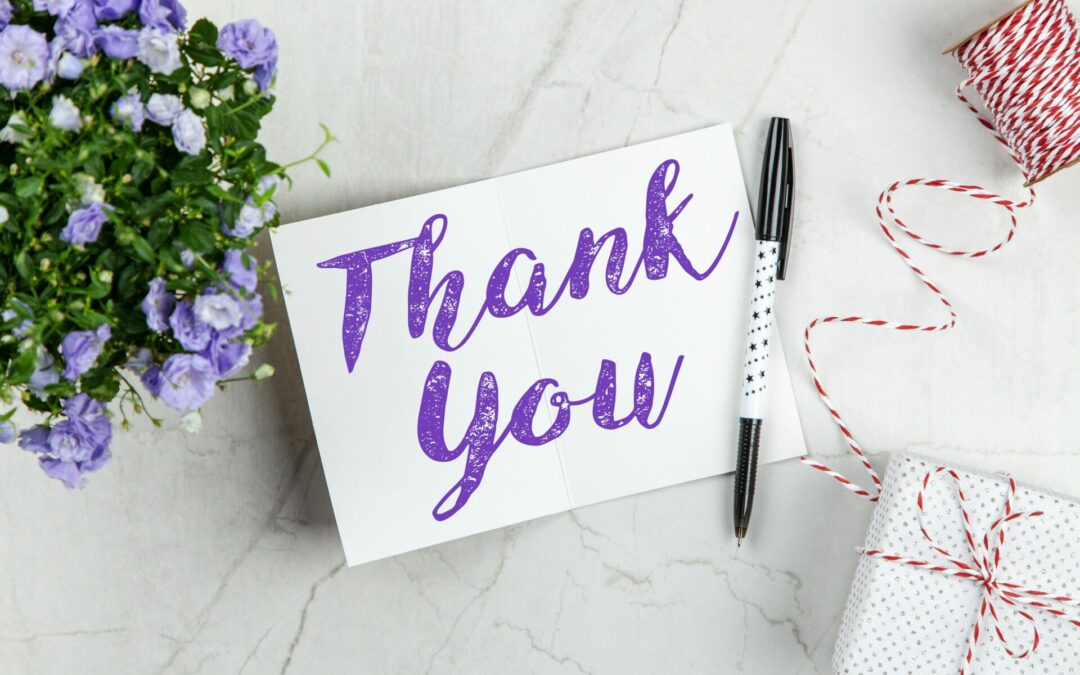Obtaining funding from donors is necessary for nonprofits. And donors, whether individual donors, family foundations, or corporate foundations, all want to see the nonprofit succeed.
Getting a donor is a lot of work. Much effort is needed to win the trust of a donor, from personal interactions or filling out grant applications. And even more effort is involved in maintaining that relationship.
When a nonprofit’s executive director (ED) is trying to manage daily operations, make appearances in the community, and support the nonprofit’s vision, donor relationship building often falls to the bottom of the priority list.
An often overlooked tool in maintaining and strengthening donor relationships is the donor acknowledgment letter. Organizations regularly send out fundraising letters, including year-end fundraising letters that feature a recap of the year’s activities and successes with the ask for funds.
But do you, as an organization, make donor acknowledgment letters a habit? While it is commendable to send an acknowledgment letter to your donor following a contribution, is that the only letter you send until the next fundraising campaign?
How often should you send a letter? And what can you include?
How donor letters build trust
You should think of donor letters as a marketing tool to build trust in your brand and your organization.
In this age of disappointment and financial corruption, your honesty is imperative to prove to donors that with their help, you are truly making a difference. By being transparent with how you are using the donated funds; the improvements you are making to be valuable in the community; and keeping your organization in front of the donor consistently, even in the form of a letter, helps the donor get to know you. Not all donors experience first-hand what you are accomplishing or the events you produce, yet they are moved to give. Your letters help donors feel included, so it is important to make these letters personal to them.
How often should you send donor letters?
More than once a year. More than the initial acknowledgment. Send one every quarter. Send one following an event or major accomplishment.
The point is to send regularly and often.
What to include in donor letters
The majority of your donors give to you because they believe in the services you provide to the community. They want to be a part of that positive change. Your letter should tell them what your organization is doing, and how their financial support is helping to accomplish that.
For each batch of donor letters you write, the bulk of the content will be the same for all of your donors. But when possible, tailor the introduction to any donors you know personally and have a connection with. While each letter should be personally signed by the executive director or board chair, the letters are typically a collaborative effort among the board and ED. A professional writer can also be hired to write these, but the end result stems from a team effort and is approved by the board.
Approach donor letters the same as when you receive a grant from a foundation: You are expected to submit reports and other materials to keep the grant giver up to speed on how you are using the funds. The information you send is likely specific to the foundation for that specific grant.
While you cannot always write personal letters to each donor, especially if you have many, you still want to think of your letter as something personal from you. Write it as if your donor is sitting in front of you having coffee and you are both sharing your latest news. What does your donor want to hear?
Some organizations send their donor letters via email, which is perfectly acceptable. (Note that this is not the same as sending an e-newsletter, which you would be sending to everyone, including your donors. An e-newsletter is another marketing tool to announce events, give updates, tell stories, etc., about your organization and services.) Effort, care and design should all be considered with your email donor letters as with physical letters.
To avoid overwhelm both for you and the donor, keep your letters brief. One page is usually all that is necessary, depending on the message. Focus on one event or program and how the community or the participants in the program benefited.
Above all, acknowledge how much the donor means to your organization. Sharing success stories or a behind-the-scenes look at your operations will help the donor understand what your nonprofit is doing to benefit others.
Building rapport with your donors is a way to strengthen relationships so they will continue to give, and possibly give more. Your letters remind your donors they are needed and valued.
How to repurpose donor letters
Much time, effort, and teamwork is needed to produce each batch of donor letters. So avoid writing them as a one-and-done marketing task, and instead consider how they can be repurposed as much as possible.
How?
Review your communications mediums: your website, your social media, your newsletter, your blog. Can you share information from a letter — success stories, event updates, photos — and add them to your marketing materials?
Can you take that brief donor letter and turn it into a longer piece and post it on your website? You can then direct the donor to your website to read more about the snippet you framed in your letter.
Every piece of marketing you produce for your nonprofit should be repurposed because you have valuable information to share. Always keep in mind your audience for the specific marketing channel and tailor your messages accordingly.
Donor acknowledgment letters are a condensed compilation of your organization’s successes that you make personal for the donor. Show your donors you care about them by showing them how their financial support makes these success stories in your letters possible.


Recent Comments